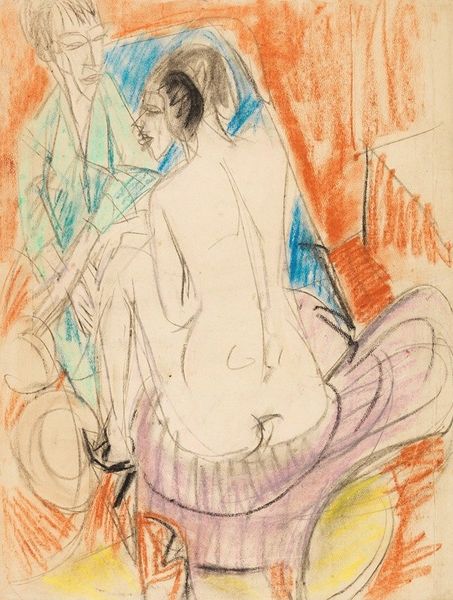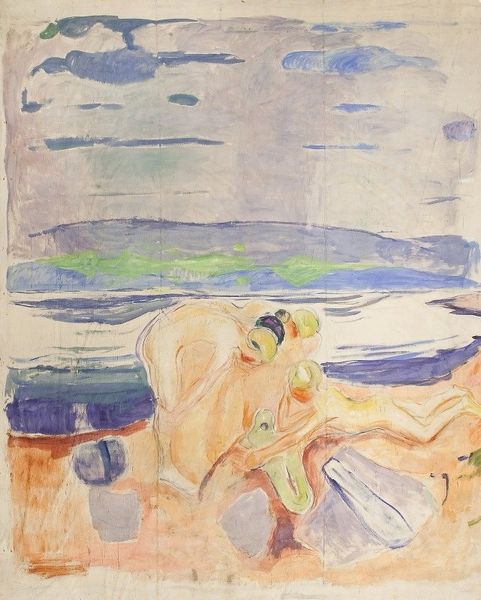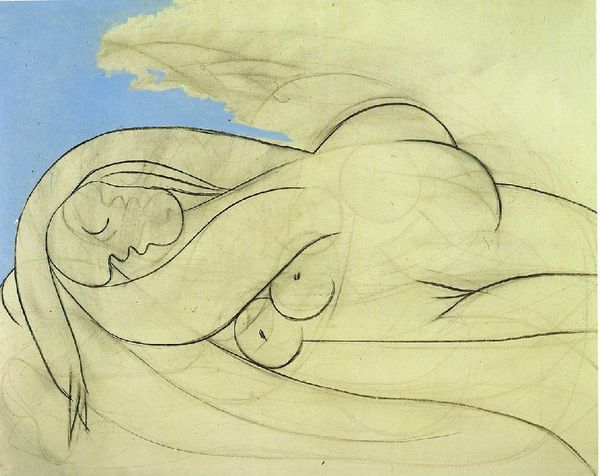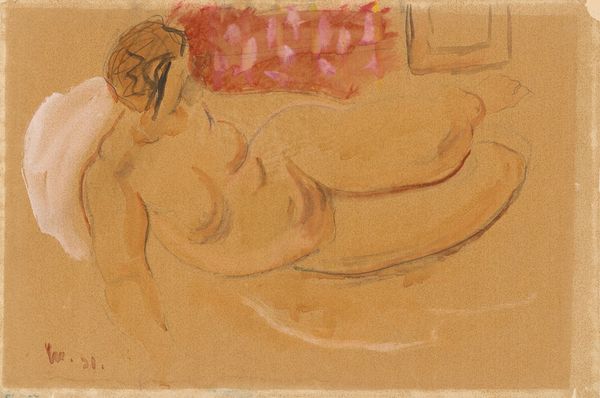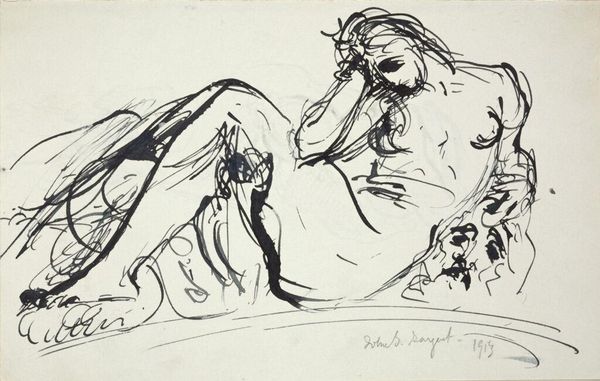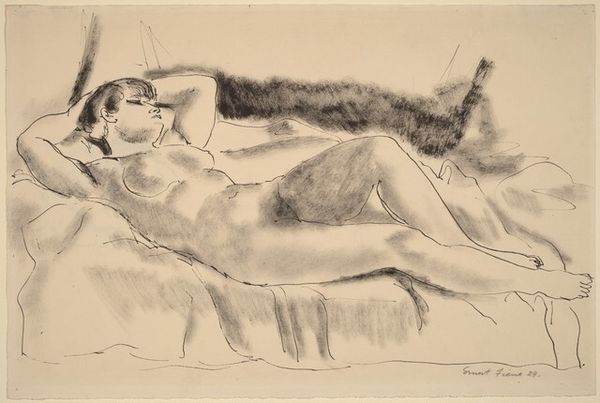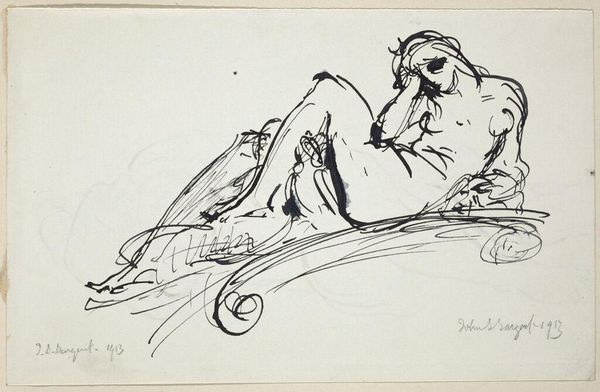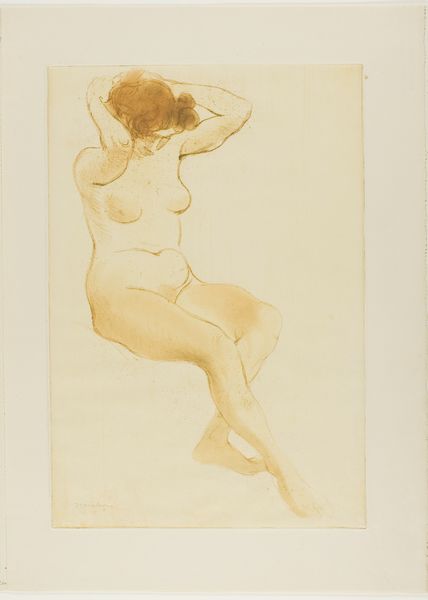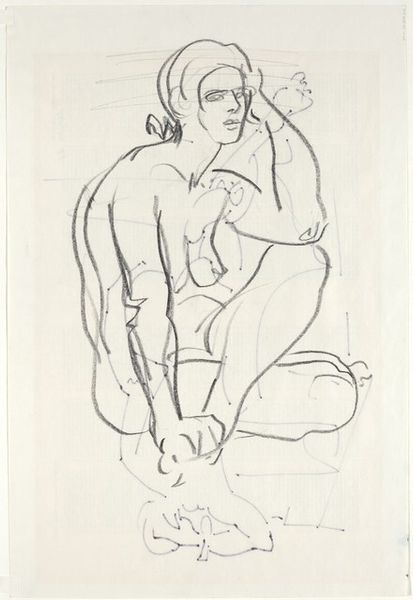
drawing, watercolor
#
portrait
#
drawing
#
figuration
#
watercolor
#
expressionism
#
nude
Copyright: Public Domain: Artvee
Editor: Here we have Ernst Ludwig Kirchner's "Akt mit rotem Hut," or "Nude with Red Hat," from 1912, a watercolor drawing. I’m struck by the vibrant color and the almost aggressively loose lines. What do you make of this piece? Curator: Well, immediately I consider the socio-political environment from which Kirchner's expressionistic style emerged. There was a widespread anxiety and unease brewing in pre-war Germany, reflected in the Die Brücke group's radical, often jarring, artistic choices. The nude was not new, but the *representation* of the nude – its social role, if you will - was changing significantly. How does this make you feel? Editor: I suppose I hadn’t considered the tension of the era so explicitly, but now that you mention it, there’s an almost defiant air to the work, even beyond the expressive brushwork. What about the choice of materials? Curator: Kirchner, like many of his peers, favored less traditional materials like watercolor and woodcuts, partly because they offered a quicker and more immediate form of expression. But also because they inherently resist any sense of polished, academic "finish". This resistance to tradition was a conscious rebellion, and one with distinct social and cultural implications for what constitutes "high art." Notice also how the red hat pops in color -- perhaps representing something daring? Editor: That's fascinating – I’m really starting to see this piece in a new, much broader light. It's more than just an image of a nude; it's a statement! Curator: Exactly! By considering the history, the materials, the societal impact – that's how we can understand the layered narratives and challenging questions that art presents us with.
Comments
No comments
Be the first to comment and join the conversation on the ultimate creative platform.
